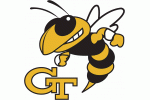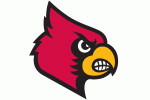Welcome to Michigan State, President Kevin Guskiewciz.
 I’ve been told you have a high school and college journalist background. We have that in common, although upon further review I recognize your post-college career leaves me trailing your brain power like a nose tackle chasing a speedy tailback.
I’ve been told you have a high school and college journalist background. We have that in common, although upon further review I recognize your post-college career leaves me trailing your brain power like a nose tackle chasing a speedy tailback.
The further review was I learned that prior to serving as North Carolina’s Chancellor, you forged a career as a neuroscientist who founded the UNC Center for the Study of Retired Athletes. You also directed the Matthew Gfeller Sports-Related Traumatic Brain Injury Research Center.
With that academic background, you’ll be interested to learn Michigan State’s 1960s football story – which changed the face of the game – includes a profound chapter on concussions.
Jim Proebstle, a tight end on the Spartans’ 1965 national championship team, wrote a 2015 book, “Unintended Impact, One Athlete’s Journey from Concussions in Amateur Football to CTE Dementia.” It details the health decline into dementia of his older brother, Dick Proebstle, a Michigan State quarterback.
And in unexpected twist that makes life full of so many mysteries, the story relates to College Football Hall of Fame coach Duffy Daugherty’s 1960s teams leading college football integration.
Briefly, Dick Proebstle suffered concussions in high school prior to a severe one in an MSU 1964 spring football practice. Michigan State’s doctors told him he couldn’t play football anymore. Who knew doctors made such a football diagnosis back then?
Here’s the twist to the story: Duffy and freshman coach Burt Smith kept Dick Proebstle involved as a freshman student coach, and the 1964 freshmen class included quarterback Jimmy Raye. He arrived aboard Daugherty’s Underground Railroad from segregated Fayetteville, N.C., and he needed to learn footwork opposite from his high school experience in a passing offense – unusual for its time – to the Spartans’ option scheme.
“Burt Smith saved me by having Dick Proebstle work with me,” Raye says on Page 244 of our book, ‘Raye of Light, Jimmy Raye, Duffy Daugherty, the Integration of College Football and the 1965-66 Michigan State Spartans.’ “He made sure Dick kept teaching me the fundamentals of the offense.”
Raye went onto to become the South’s first Black quarterback to win a national title on the 1965 and 1966 teams. Remember, this was the 1960s when not all white athletes and coaches welcomed Black players. Michigan State was a different place that stands apart.
The Spartans of 1964 also established integration history when Duffy took his team to your old school for a landmark game at Kenan Stadium. The Spartans were the first fully integrated roster to play in the South. Clinton Jones, a College Football Hall of Famer, integrated Kenan’s end zone as the first African American to score a touchdown.
But since the sports media avoided race in the 1960s, it was a milestone that went unrecognized like many other Black athletic landmarks. I tell the story in my new book, “THE RIGHT THING TO DO, The True Pioneers of College Football Integration in the 1960s” to be released on January 1. Jones and I also had a chance to revisit the moment in the Kenan end zone last month. I tell that story and more on my website, TomShanahan.Report.
If you’re surprised to learn the story, this will befuddle you more: For a variety of odd reasons, our own school doesn’t understand its history. As a result, it has failed to educate its alumni, its students and the surrounding communities unaware of one of the reasons they have a great university in their backyard.
The reasons start with MSU president John Hannah leaving the school in 1969. The football budget was cut and Daugherty had a falling out with the new administration. After that, the blame falls on successive presidents, athletic directors and coaches (the present interim president and AD excepted) who weren’t connected to Michigan State’s proud past or interested in teaching it.
If I had a moment of your time on your “listening tour” that you mentioned in your Youtube introduction, I’d explain how Daugherty’s Spartans stood apart AND atop from the rest of college football in the 1965 and 1966 seasons. The sports media’s failure to report racial milestones in the 1960s is the missing piece in college football lore that leaves Michigan State’s ground-breaking history unrecognized.
One result was a misconception exists that because Minnesota, USC and a few other schools featured All-American Black athletes scoring touchdowns in the 1960s, they were integration leaders. They weren’t. They were the same as other schools – they followed an unwritten quota limiting Black players to a half-dozen or so. Minnesota’s 1960 national championship team numbered only five Black players, USC’s 1962 national title roster only five and USC’s 1967 national championship team only seven.
The latter requires closer inspection: A program in populous and diverse Los Angeles has to work at limiting its numbers to a half-dozen. And, in another 1960s sports media irony, UCLA, USC’s cross-town rival, has a more progressive integration history to cite than the Trojans in both football and basketball.
Daugherty ignored those quota limitations and by the end of the decade the rest of college football followed his model. In the first chapter of ‘THE RIGHT THING TO DO,’ my research notes a startling statistic. Of the 1960s national championships designated by the Associated Press (writers) and United Press International (coaches), 41 percent of the rings earned by Black athletes were claimed by Michigan State’s 1965 roster.
The numbers are broken down in the chapter, but the seven schools with a share of an AP or UPI 1960s titles were Minnesota, Alabama, USC, Texas, Michigan State, Notre Dame and Ohio State. USC and Notre Dame following quota limitations pushed the numbers to favor Michigan State. Ohio State wasn’t equal to Michigan State, but the Buckeyes were better than Minnesota, USC and Notre Dame.
Barry Switzer, Oklahoma’s College Football Hall of Fame coach, Chapter 1, THE RIGHT THING TO DO, The True Pioneers of College Football Integration in the 1960s
The coach most recognized with college football integration in the 1970s was Oklahoma’s Barry Switzer: Here’s what Switzer told me about Daugherty in Chapter 1 in “THE RIGHT THING TO DO:”
“Duffy was ahead of his time. He was doing the right thing. That’s what I tried to do when I recruited Black players at all the positions. Duffy did more for integration than any other coach in college football.”
The most significant moment in college football integration was the 1966 Game of the Century when No. 1-ranked Notre Dame and No. 2 Michigan State met on November 19 before a record crowd of 80,011 at Spartan Stadium and a record TV audience of 33 million. The nation saw the contrasting rosters on their TV screens.
Michigan State was the future with 20 Black athletes, 11 Black starters, two Black team captains, College Football Hall of Famers George Webster and Clinton Jones, and the aforementioned Raye playing a position other schools denied Black athletes.
Notre Dame was the past with one Black player, Alan Page. The Irish weren’t alone, though. USC was in line with them.
So, once you get settled into Cowles House upon taking over on March 4, I imagine you may be tempted to stroll the campus. If you look for a statue of Daugherty or something recognizing the 1966 Game of the Century, I’ve already explained why you won’t find anything.
Hopefully, you can bring back the lost history.
Sincerely,
Tom Shanahan, Michigan State, 1978
Proud former State News Sports Editor in the time of Earvin “Magic” Johnson, Jud Heathcote, Eddie Smith, Kirk Gibson and Larry Bethea.
P.S.
I have to include this addendum because you’ll no doubt hear, perplexingly, from Michigan State people trying to tell you about how Alabama coach Bear Bryant, as a benevolent segregationist, sent Duffy players. Disregard myths that steer credit away from Daugherty to Bryant and USC coach John McKay.
More specifically:
— 1) For some strange reason, some MSU fans like the vicarious link to Bryant without understanding to believe the falsehoods reduces Daugherty to a passive bystander. I recently returned from a successful fundraiser put on by the MSU Alumni Club of Riverside (California) in Palm Desert the night before the Arizona-Michigan State basketball game in the Acrisure Classic. The club invited me to talk about my books. I explained how Michigan State stood apart.
Later in the evening, a couple of older alums approached me at my table while selling and signing books, which included chapters debunking the myths. They blithely told me about Bear Bryant sending Duffy Daugherty players. I could have raged at them like Tom Izzo during a timeout after a missed rebound led to an opponent’s easy fastbreak, but I patiently explained it’s not true. Then I added why it’s unfair to Duffy’s legacy to spread the falsehood. The other side of the coin was the myth was spread to whitewash Bryant dragging his feet on integration.
— 2) Don’t let anyone tell you the 1970 USC-Alabama game and Sam Cunningham were a tipping point. College football integration was fait accompli by 1970. USC started only four Black players in the 1970 game because the Trojans were shedding their quota limitation years. Bryant was the seventh of 10 SEC coaches to integrate his program.
That’s another Bryant fact left out of college football lore, another moment of the sports media failing its journalistic duties.
***
I will put research on college football integration in the 1960s up against anybody, anytime, anywhere.



















